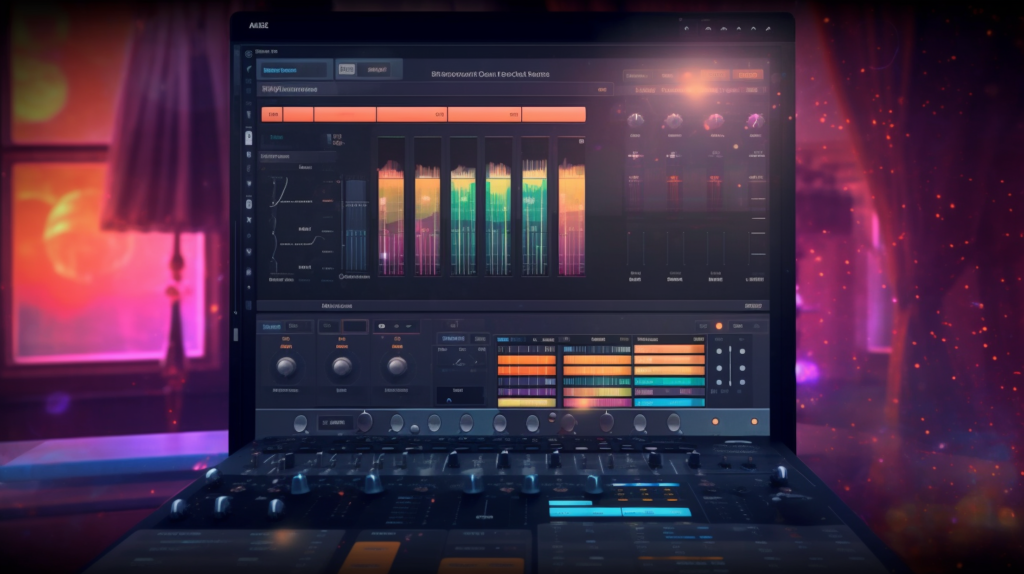
In the realm of music production, the 808 bass stands as a colossus, shaping genres and igniting tracks with its unmistakable depth and power. Originating from the classic Roland TR-808 drum machine, this sound has transcended its humble beginnings, morphing into a dynamic tool in the hands of modern producers. This article, crafted for the advanced producer, delves into the artistry of 808s, unveiling intricate techniques to mold and shape this iconic sound to your creative will.
Understanding the Anatomy of an 808
Let’s dissect the 808 at a molecular level. Central to its identity is the sine wave – pure, unadulterated, and rich. This wave forms the bedrock upon which all variations of 808s are built. Adjusting the attack determines how swiftly the sound asserts itself, while playing with sustain and decay allows you to sculpt its presence in time. Grasping these nuances is crucial; they are the difference between an 808 that merely supports and one that commands attention.
Delving Deeper into Waveform Manipulation
To truly master 808s, you must become adept at waveform manipulation. This means not just tweaking presets but understanding how to mold waveforms from scratch. Experiment with adding subtle harmonics to your sine wave; even a faint touch of a square or sawtooth wave can introduce a new character. It’s about finding that sweet spot where the sound retains its integrity yet acquires a new dimension.
The Art of Envelope Shaping
The envelope of your 808 is your storytelling tool. It dictates the narrative arc of the sound. A sharp, quick attack coupled with a rapid decay creates a punchy, staccato effect, ideal for genres like trap or grime. Conversely, a gentler attack with a prolonged decay and sustain can create a brooding, omnipresent bass suitable for ambient or down-tempo tracks.
Crafting the Classic 808 Sound
To recreate the classic 808 sound, step into the shoes of the old-school producers. They didn’t have the luxury of endless plugins; they had to rely on the quirks and character of the hardware. Start with a pure sine wave and then introduce slight distortions or saturations that emulate the analog warmth. The key is subtlety – it’s about evoking a feeling, a hint of nostalgia, rather than overtly replicating a vintage sound.
Tuning and Texturing
A crucial yet often overlooked aspect is the tuning of your 808s. It should not only be in key with your track but also resonate with the other elements. Texturing comes next. This could be as simple as layering a faint kick to add a bit of grit or as complex as using granular synthesis to create a texture that’s constantly evolving yet rhythmically in sync with your track.
Modern 808 Manipulation Techniques
In the modern music landscape, 808s need to cut through dense mixes and compete with an array of digital sounds. This requires a blend of EQ and compression techniques tailored to the contemporary palette.
EQ Sculpting
Use EQ to carve out a space for your 808. This often means creating a balance between the low-end punch and the mid-range character. Don’t be afraid to be surgical – sometimes, a slight notch in the mid-range can bring out a hidden aspect of the 808, giving it a unique voice in the mix.
Dynamic Compression
Compression is your tool for controlling the beast. The goal is to tame the dynamics without losing the essence. Side-chain compression can be particularly effective here, allowing your 808 to breathe in sync with the kick or other rhythmic elements. The key is to maintain the natural ebb and flow of the track.
Creative Distortion and Saturation
Distortion and saturation are not just effects; they are alchemical processes that can transmute your 808 into something extraordinary. It’s not just about making it louder or more aggressive; it’s about adding a layer of complexity, a color that wasn’t there before.
Harmonic Enrichment
With distortion, you’re introducing new harmonics, new frequencies that can make your 808 sound fuller and more present. It’s particularly effective in genres like EDM or hip-hop, where the 808 needs to assert its dominance. Saturation offers a more subtle approach, adding warmth and depth, almost like aging a fine wine to bring out its best flavors.
Pitch and Modulation Tricks
In the landscape of advanced 808 production, pitch and modulation play pivotal roles. They infuse movement and a dynamic character into the static nature of bass tones.
Exploiting Pitch Envelopes
Pitch envelopes can turn a standard 808 into a snappy, attention-grabbing element. By rapidly modulating the pitch at the beginning of the sound, you introduce a punch that can make each hit more pronounced. This technique is a secret weapon in genres where the 808 needs to cut through dense layers of other sounds.
LFOs for Rhythmic Variation
LFOs (Low-Frequency Oscillators) offer a treasure trove of possibilities. By applying an LFO to modulate either the pitch, volume, or filter of your 808, you can create rhythmic variations that keep the sound dynamic and engaging. This can be particularly effective in electronic genres, where the 808 can play a more melodic and rhythmic role.
Space and Depth – Reverb and Delay Usage
Reverb and delay with 808s? Absolutely, but it’s a game of finesse and subtlety. These effects, when used judiciously, can add an entirely new dimension to your 808 sounds.
Controlled Reverb for Depth
A touch of reverb can provide your 808s with a sense of space without muddying the mix. The key is to use a short, tight reverb and to EQ the reverb’s return, ensuring that the low end doesn’t become overwhelming. This technique can bring a sense of environment to your 808s, making them feel like they’re part of a larger, more realistic space.
Delay for Rhythmic Complexity
Using delay on an 808 is a delicate art. Subtle, syncopated delay settings can add a layer of rhythmic complexity to your tracks, creating a call-and-response feel that can be very compelling. It’s crucial to keep the delay time short and the feedback low to avoid cluttering the low end of your mix.
Advanced Synthesis Techniques
To truly stand out, sometimes you need to build your 808s from the ground up. This is where advanced synthesis techniques come into play, offering a world of customization.
Waveform Exploration
Don’t limit yourself to sine waves. Experiment with triangle or subtly distorted square waves as your starting point. Each waveform brings its own character and can be the key to finding a unique sound.
Synthesizer Programming
Deep dive into your synthesizer’s capabilities. Modulate the waveform shape over time, experiment with different types of filters, and don’t be afraid to get creative with the modulation matrix. The more you understand your tools, the more you can bend them to your will.
Mixing and Mastering 808s
The final frontier in 808 production is the mix and mastering phase. Here, your goal is to ensure that your carefully crafted 808s not only sound great on their own but also sit perfectly within the context of the full track.
Mixing for Clarity
In the mix, your 808 should be a foundational element, but it shouldn’t overpower the other components. Use side-chain compression to create space, EQ to avoid frequency clashes, and be mindful of the stereo image. Sometimes, subtly widening the higher harmonics of the 808 can add a sense of breadth without losing focus.
Mastering for Impact
During mastering, your focus should be on retaining the dynamics and punch of the 808 while ensuring it translates well across all playback systems. This might involve multiband compression to control the low end, careful limiting to maintain impact, and possibly some subtle harmonic excitement to ensure the 808 feels present even on smaller speakers.
Conclusion
The journey through the world of 808s is one of endless discovery and innovation. As you integrate these advanced techniques into your production workflow, remember that each 808 is an opportunity to express, to innovate, and to leave your unique sonic signature. Push boundaries, experiment fearlessly, and let your 808s be the heartbeat of your musical expressions.





